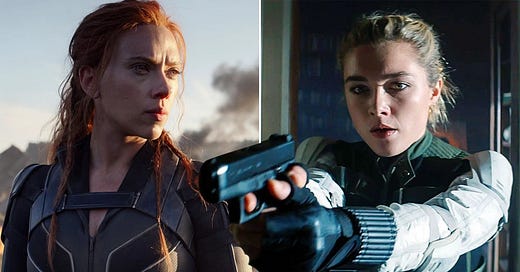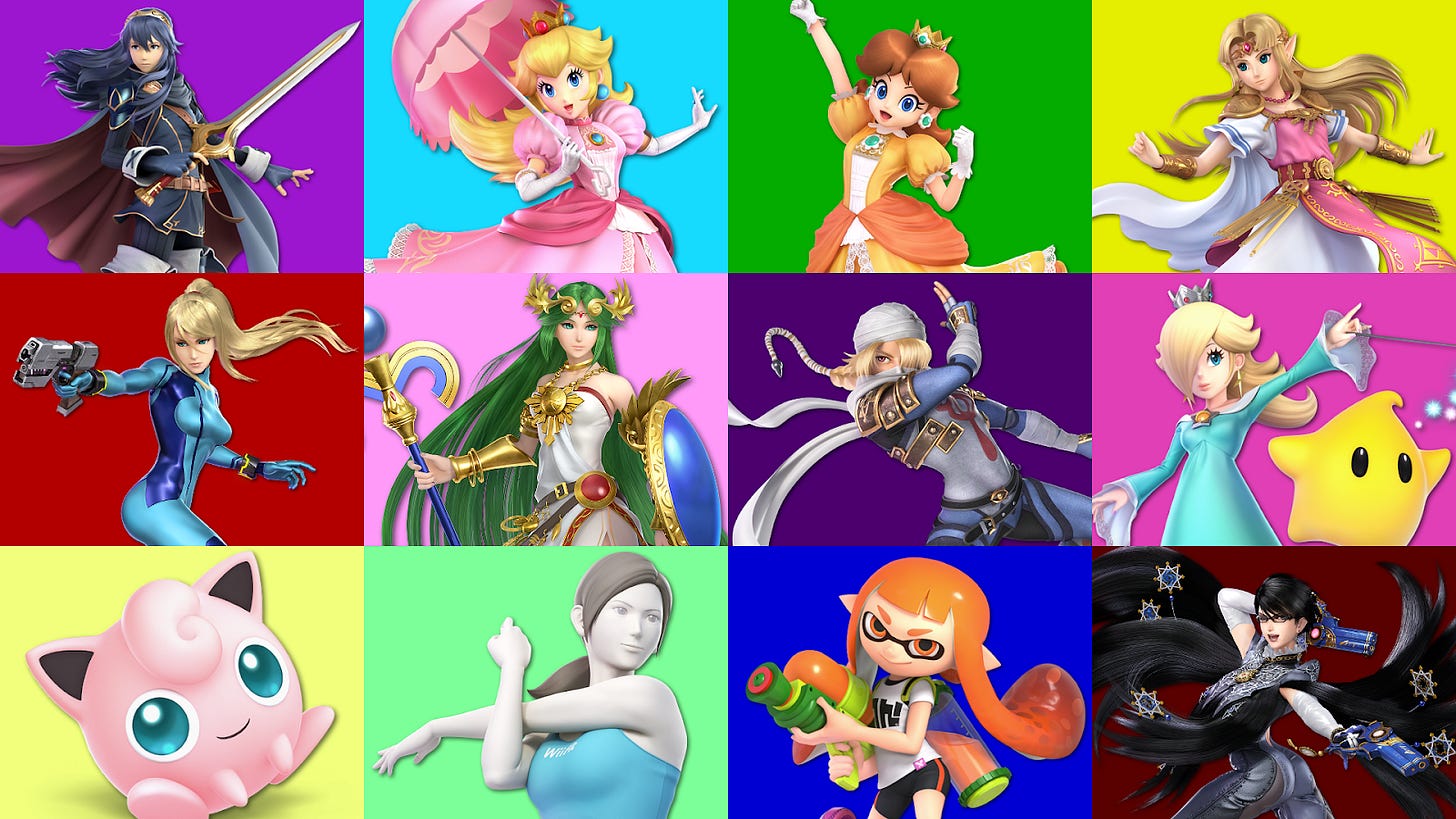ScarJo, Smash Sisters, and Other Violent Women
Violence isn’t always agency, but it sure is better than victimhood.
I recently watched Black Widow, Marvel’s latest blockbuster. In it, ScarJo and FloPu first fought each other and then subsequently kicked the ass of the bad guy, who traffics in young women—and made $140 million its opening weekend to boot. The raw violence of women on screen, giving and taking as rough as male superheroes, was eye opening. I felt the physicality of the scene: each punch and dodge, each fall, each exhilarating flight through the air was much more real than when I watched male superheroes do it.
I remember the first time I felt this sense of energy and adrenaline walking out of a movie: many moons ago, after a midnight showing of Crouching Tiger Hidden Dragon. In reflection I wonder if it’s because of the fight scenes between its two female stars, Michelle Yeoh and Zhang Ziyi.
Girl Fights
Each decade has had its share of female heroines, as documented in this Time magazine timeline. But it wasn’t until 2017 that Wonder Woman changed the game for women as superheroes (and, as it was helmed by Patty Jenkins, women as directors of superhero films). I was not the only woman who cried when Gal Gadot took on the baddies with courage and athleticism and won. In an article about the experience of these tears, behavioral scientist Clarissa Silva told Bustle:
"Women are historically objectified or subjugated, the portrayal of a woman in an empowering role is a subversion of that historical role. For some women, it addresses the larger question 'if women were to hold this position of power what would the world look like?' It’s affirming to them, it validates their intuition."
The author of the Bustle article and fellow crier Kelsea Stahler said,
As good as it felt to cry during Diana's action scenes—and as helpful as it was to know that legions of women were doing the same thing—I'll be happy when the reaction we all have is just pure enjoyment. It'd be nice to eventually get to the point where female representation in the action blockbuster genre is a given.
That was only 4 years ago. Since then, we’ve had Black Widow and other Marvel heroines, as well as a long list of wonderfully violent women, superhero and not. Harley Quinn, in which . Margot Robbie gleefully beats up baddies while handing one of her female partners in crime, Journee Smollet, a scrunchie. Or Ocean’s 8, where Hollywood A-List ladies plan an elaborate heist at one of my favorite runway spectacles, the Met Gala. Or Atomic Blonde, where Charlize Therone does her own mad, perfectly coordinated stunts. Or, in TV, Killing Eve, which pits a fashionable milliennial psychopath against an anxious Gen X cop against a corrupt Boomer spy—all women.
There’s a physical joy in seeing women fight without it being fetishized as a catfight or something oddly sexual. All of a sudden we’re alleviated of the male gaze, and damn, is it refreshing. Action and superhero films that felt dull and maybe even ‘dumb’ to me before become a fascinating choreography and an adrenaline rush of power when women are the ones winning the fights.
Smash Sisters
But what really gives me hope is seeing my 11-year old niece and her obsession with Super Smash Brothers Ultimate, a Nintendo game that pulls together 74 characters from across decades of gaming and pits them against each other in one big epic fight. She has her choice of dozens of female fighters--everyone from the eponymous princess to be saved in The Legend of Zelda to the galactic bounty hunter Samus to my favorite Bayonetta, a gothy witch with guns on her boots.
Some of the female characters of Smash Brothers, created by u/Brodyssey97 on Reddit
After I watch her play, I grab my rocking chair and tell her stories about my childhood, when all I had in my favorite game, Street Fighter II, was Chun Li, a busty martial artist who seemed surprised whenever she won a fight.
Since then, more and more female playable characters have entered the fray. This researcher did a breakdown of gender balance in Super Smash Brothers Ultimate and its predecessor games, and found that the ratio of male characters has gone down as more female characters, and gender-ambiguous or gender-fluid characters have come to the fore.
All this matters because girls like my niece are growing up with a different perspective on what they’re capable of. If they can beat boys at Smash Brothers Ultimate(which my niece handily does, cue proud Auntie), and watch superheroines fight with equally matched bad-guy ladies, they can do anything.
And if boys see the power of girls and women on screen—movie or Switch—perhaps they’ll be more likely to see them as equals or formidable rivals on other playing fields.







